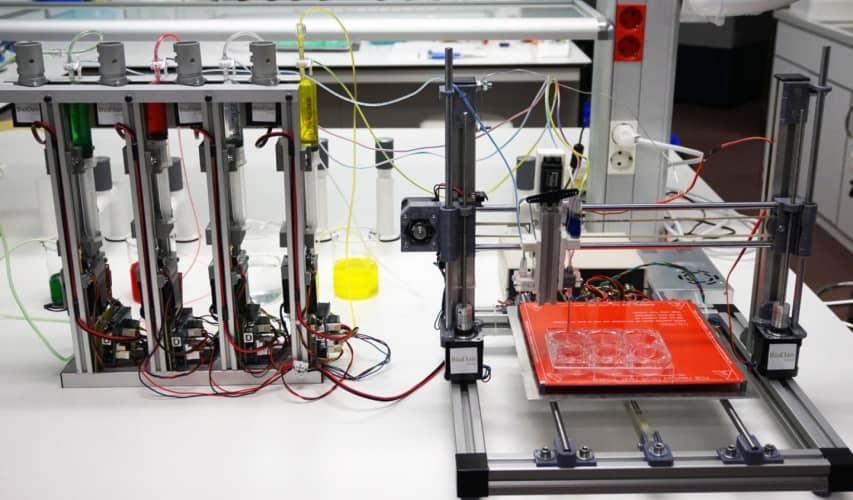
Described in the journal Biofabrication, the device replicates the natural structure of skin, with both an epidermis to protect against the elements and a deeper layer of dermis. This thicker dermis layer is made up of fibroblasts that produce collagen, giving mechanical strength and elasticity to the skin. According to the researchers, the skin can be used to treat burns, as well as test cosmetics and pharmaceuticals.
Rather than the synthetic feedstocks typically used in additive manufacturing, patented bioinks are deposited to build up the layers of the skin. The order and method in which the components are laid is pivotal, and is controlled by a computer.
"Knowing how to mix the biological components, in what conditions to work with them so that the cells don't deteriorate, and how to correctly deposit the product is critical to the system," said researcher Juan Francisco del Cañizo.
The skin can be printed in two varieties depending on its intended purpose. For industrial testing of cosmetics and pharmaceuticals, a stock of cells can be used to print allogeneic skin in large scales. For clinical uses such as treating burns, autologous skin made from the patient’s own cells can be produced in small batches.
"This method of bioprinting allows skin to be generated in a standardised, automated way, and the process is less expensive than manual production," said Alfredo Brisac, CEO of BioDan Group, the Spanish bioengineering firm working to commercialise the research.
The technology is currently being evaluated by various European regulatory agencies to ensure that the skin produced is suitable for clinical purposes.

April 1886: the Brunkebergs tunnel
First ever example of a ground source heat pump?